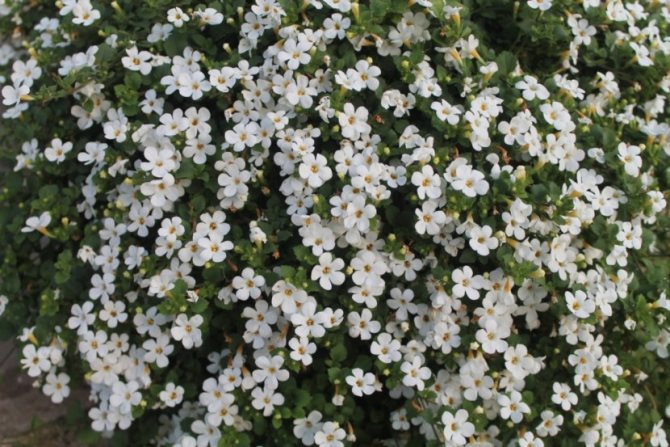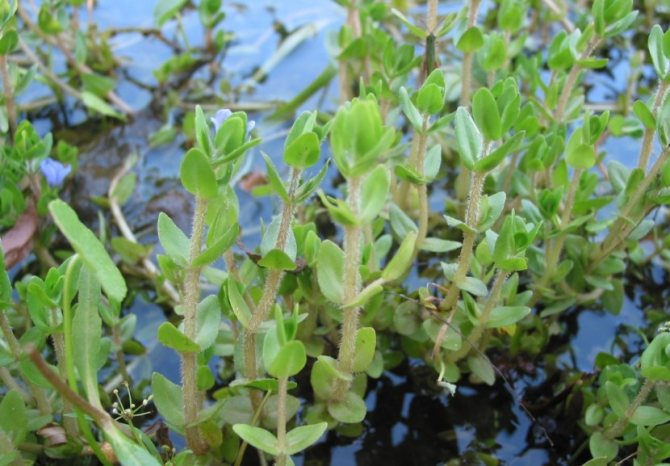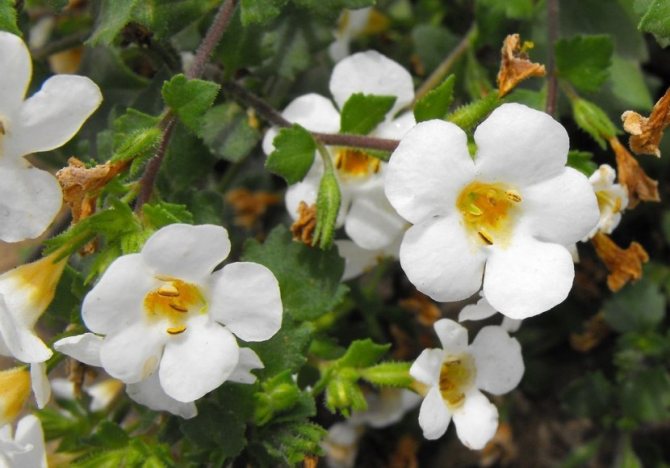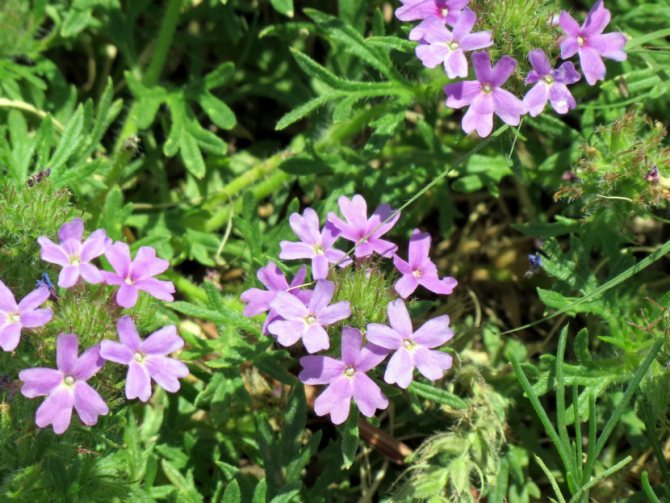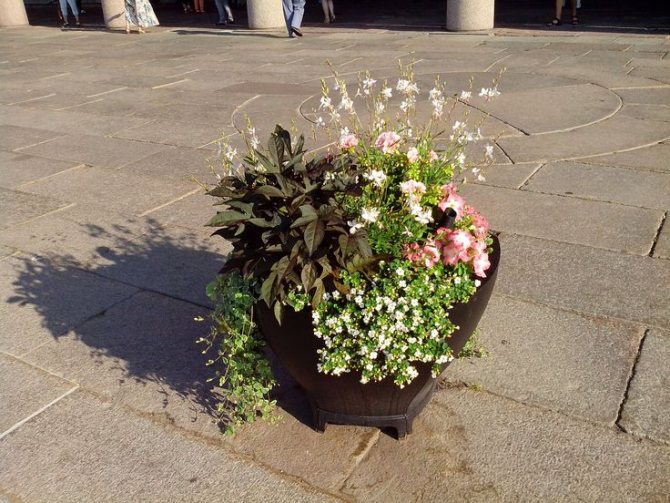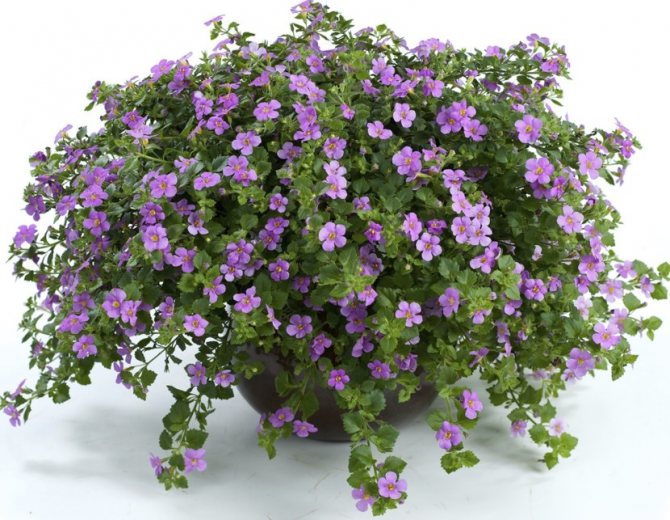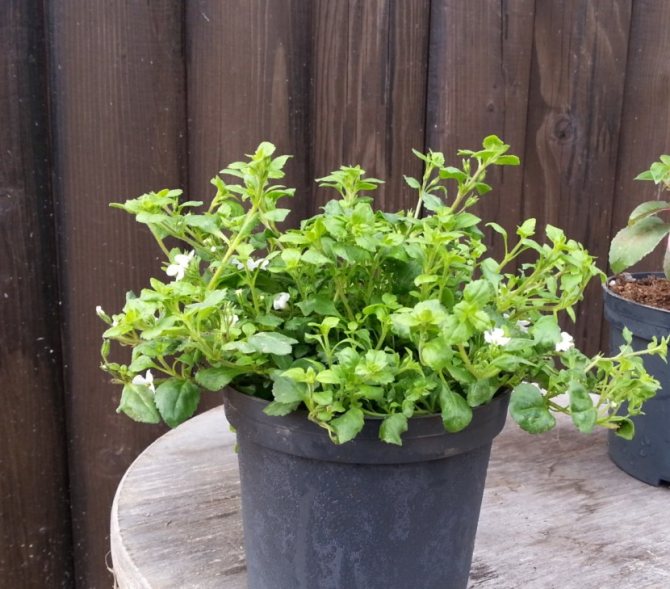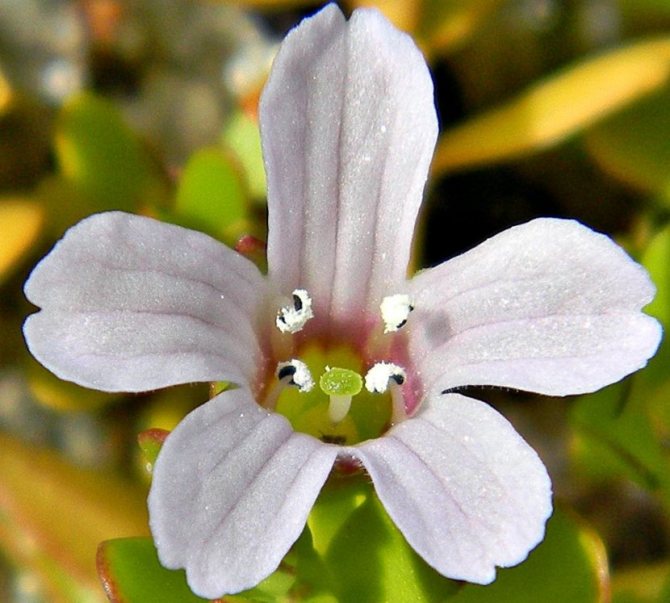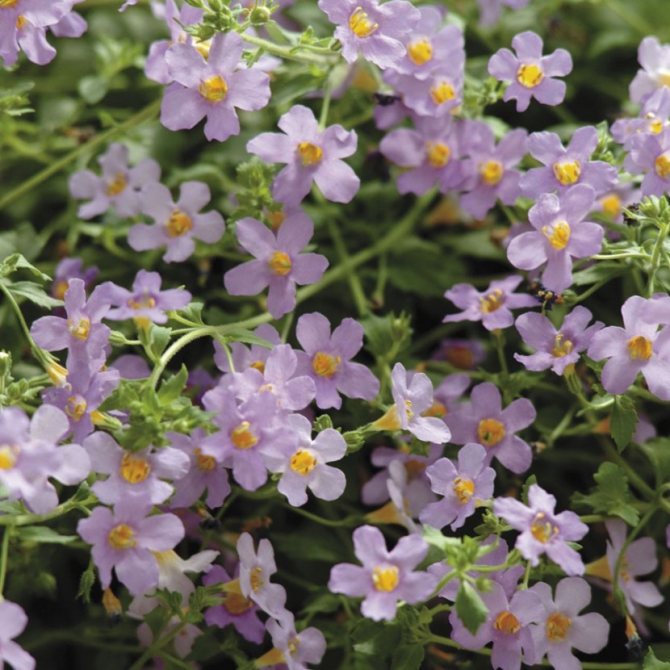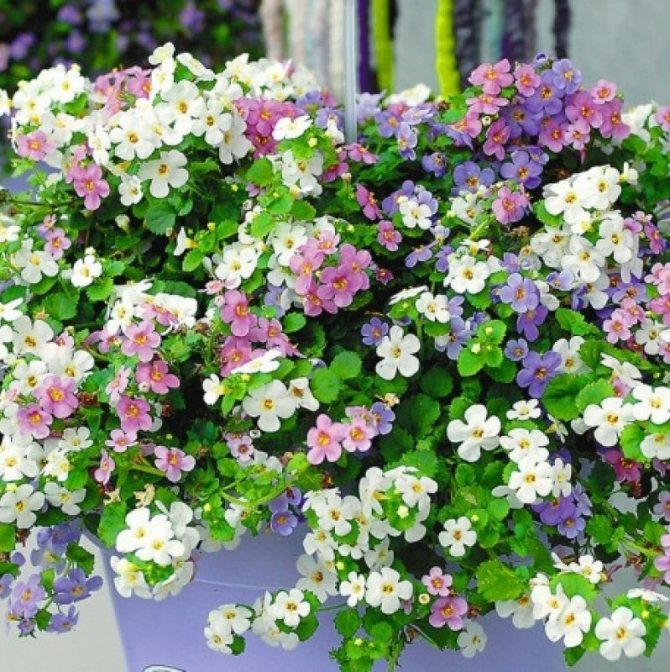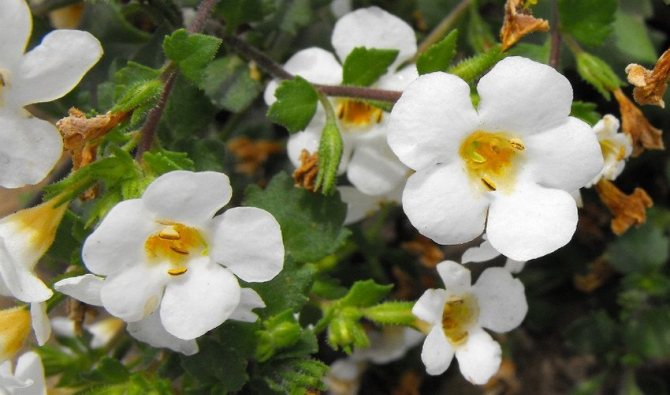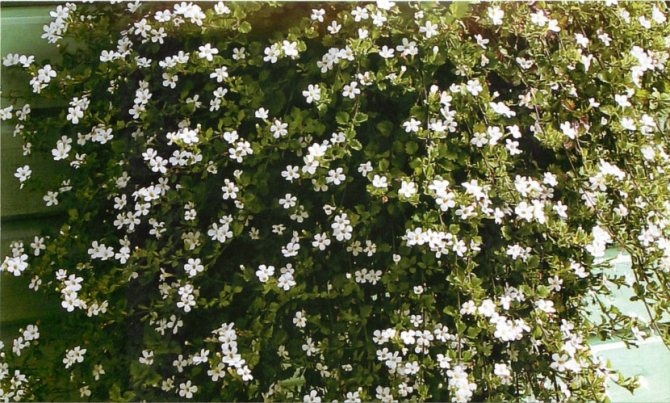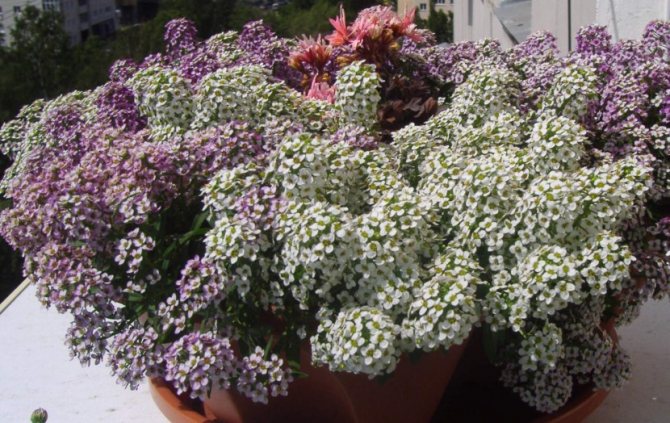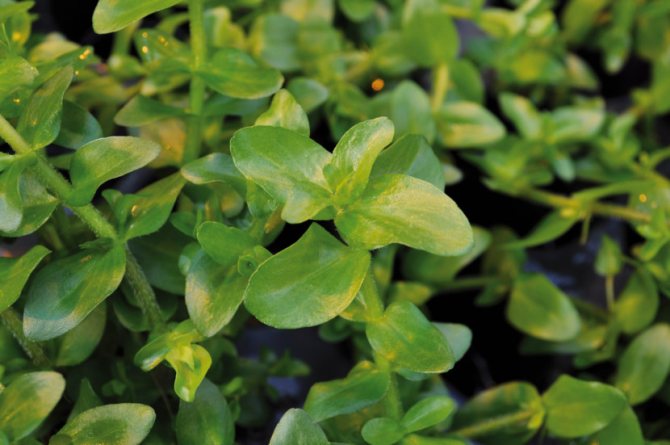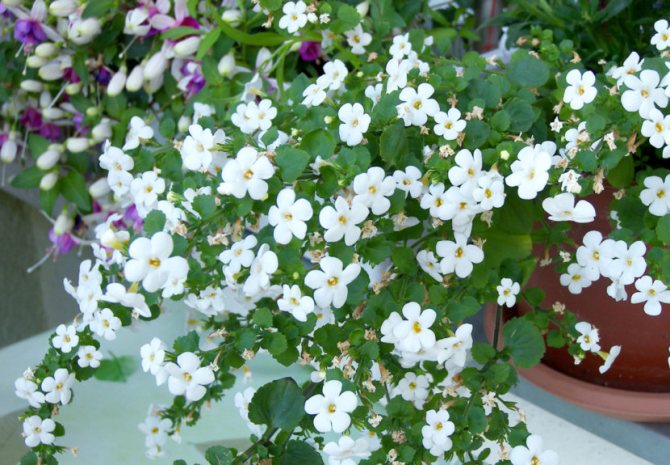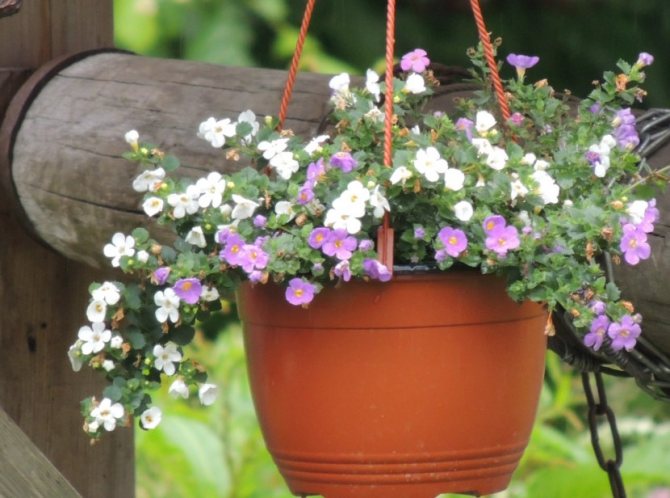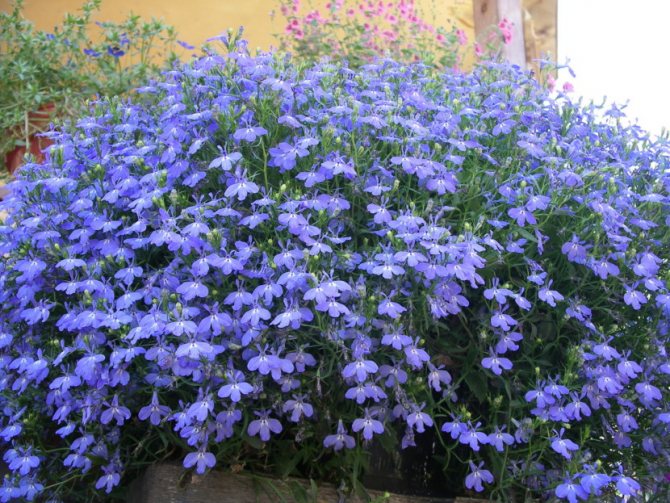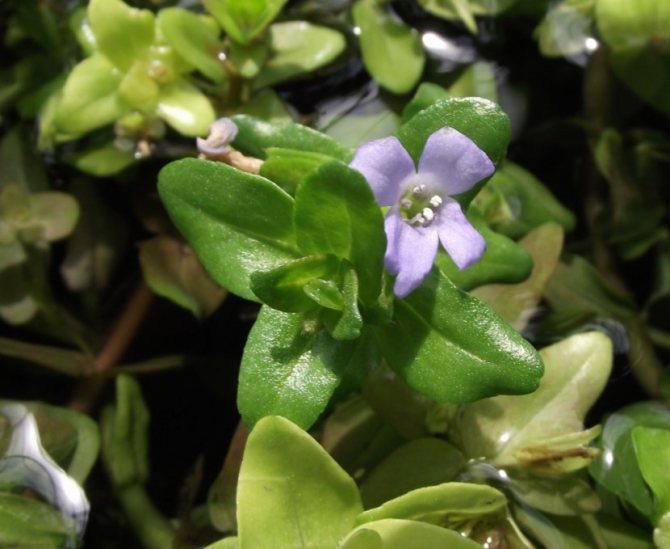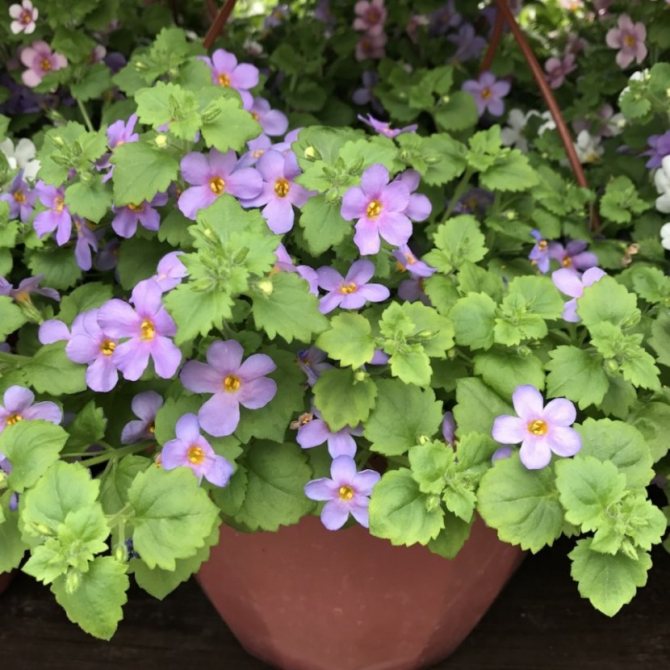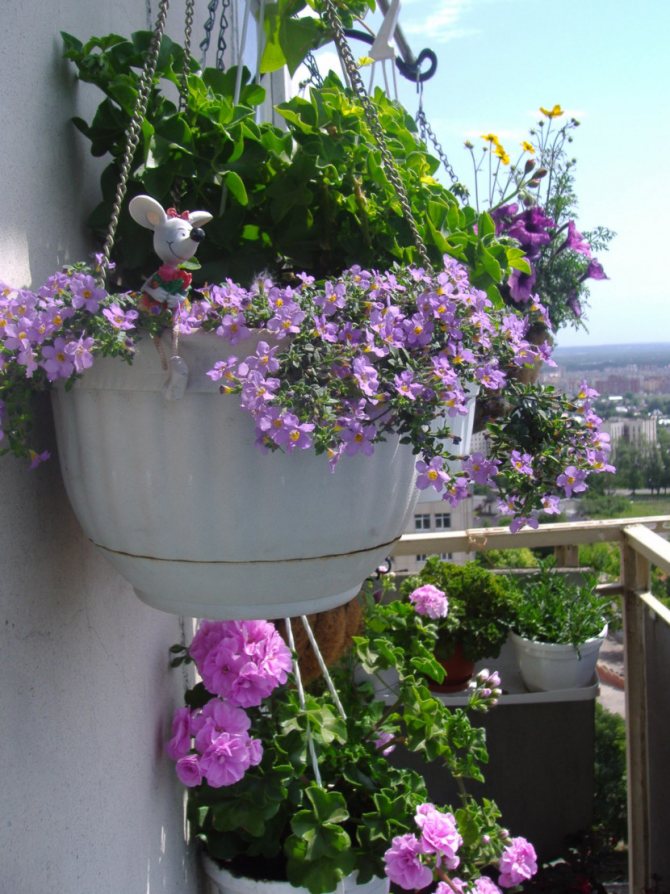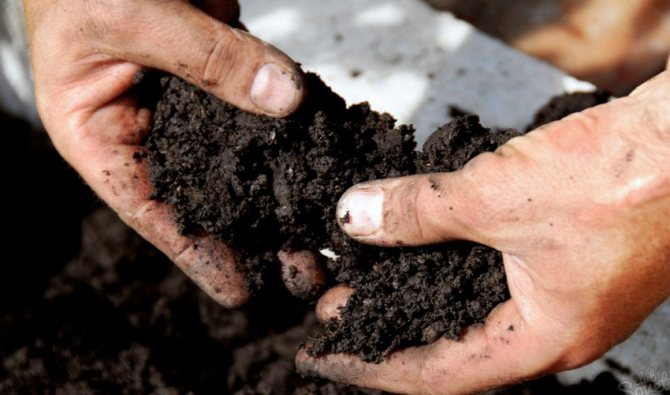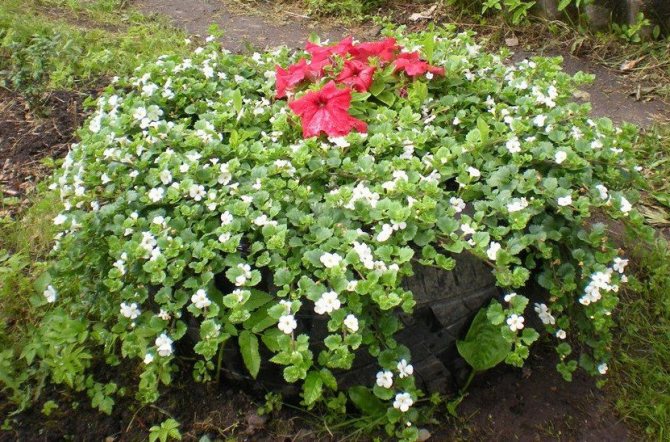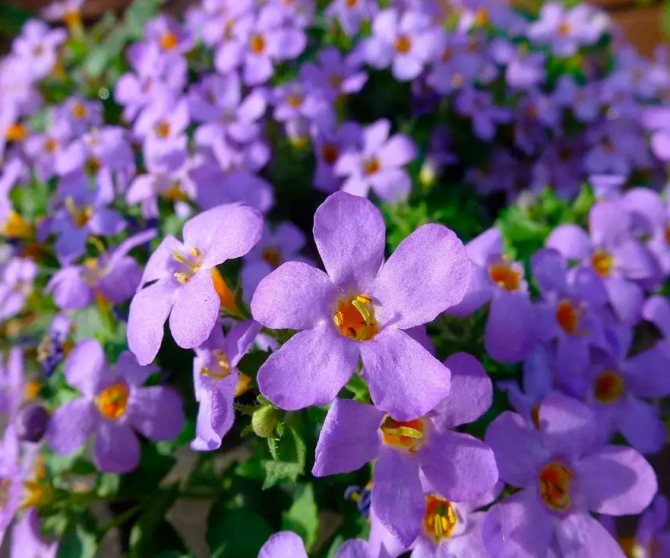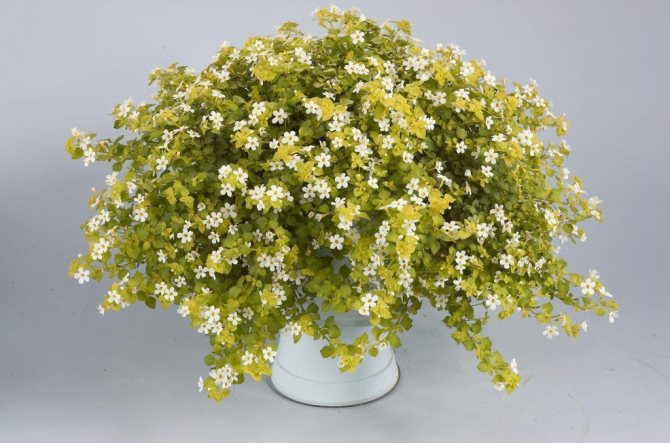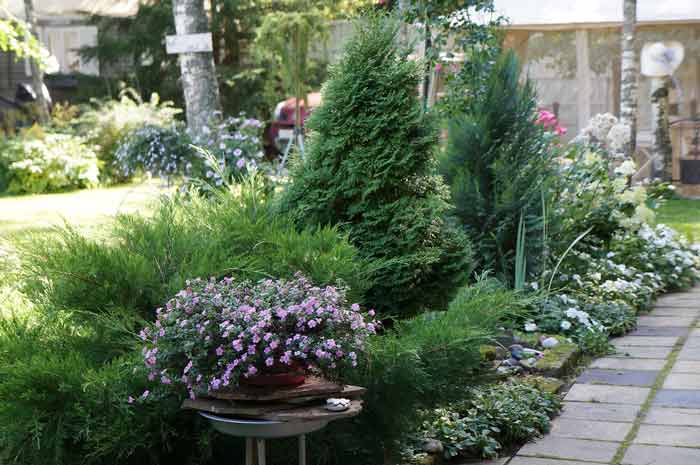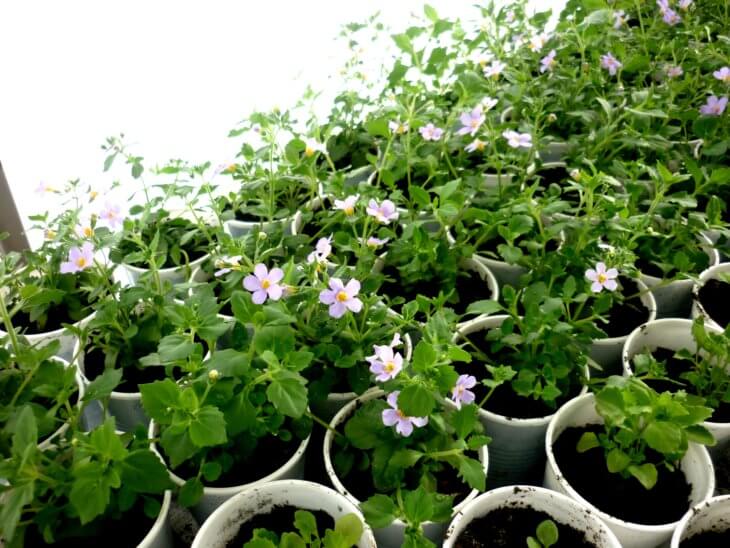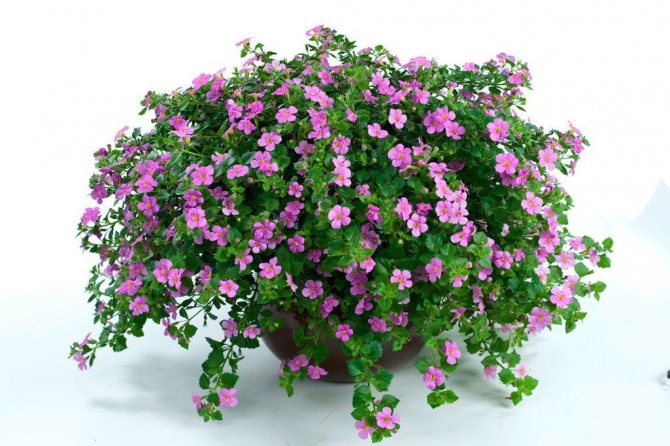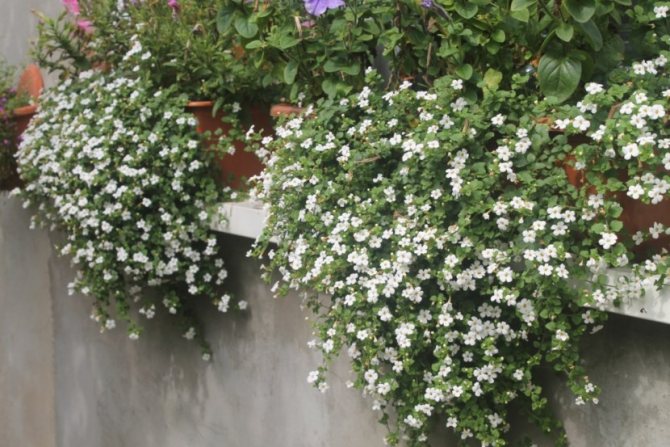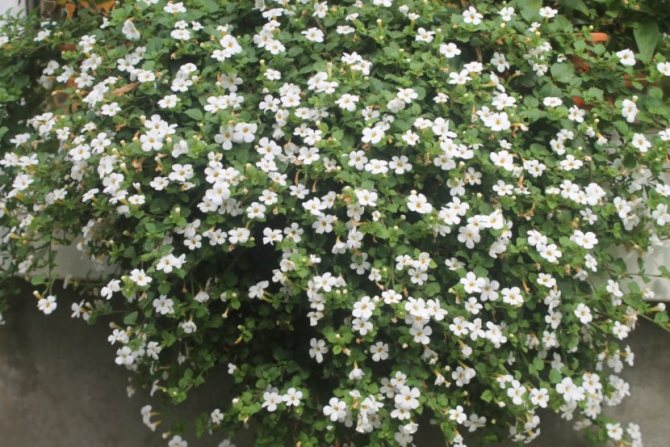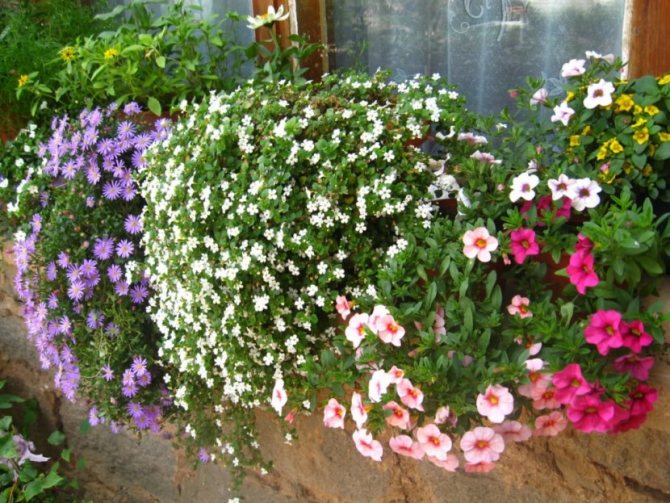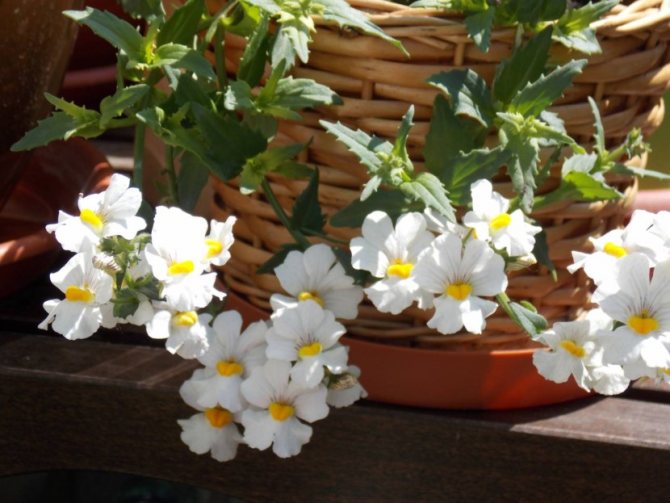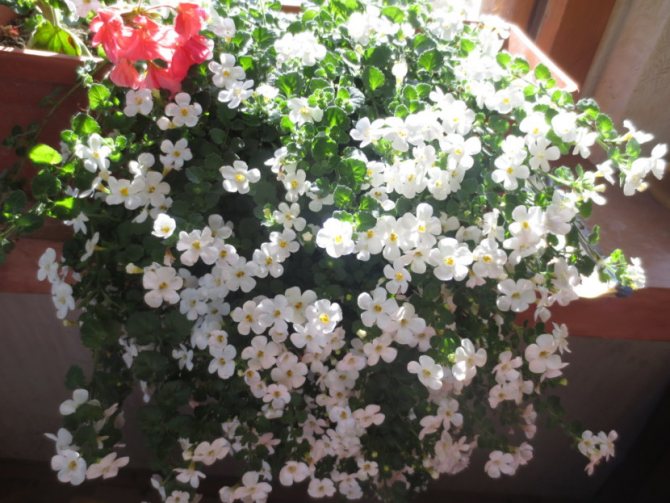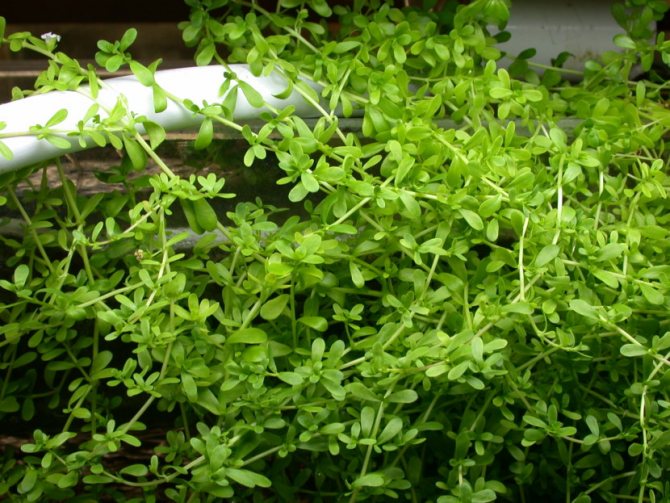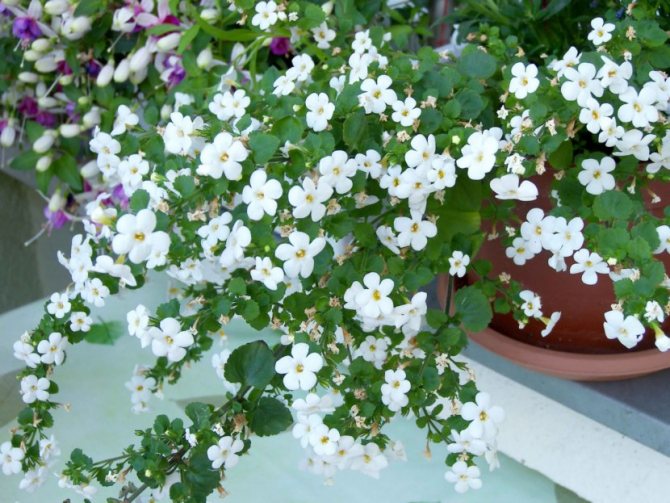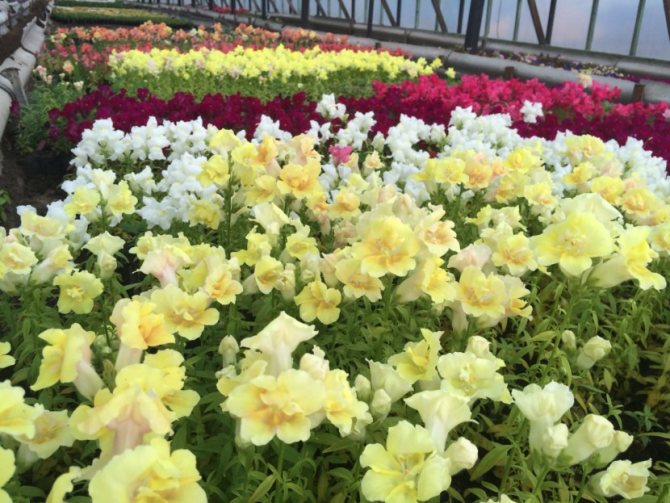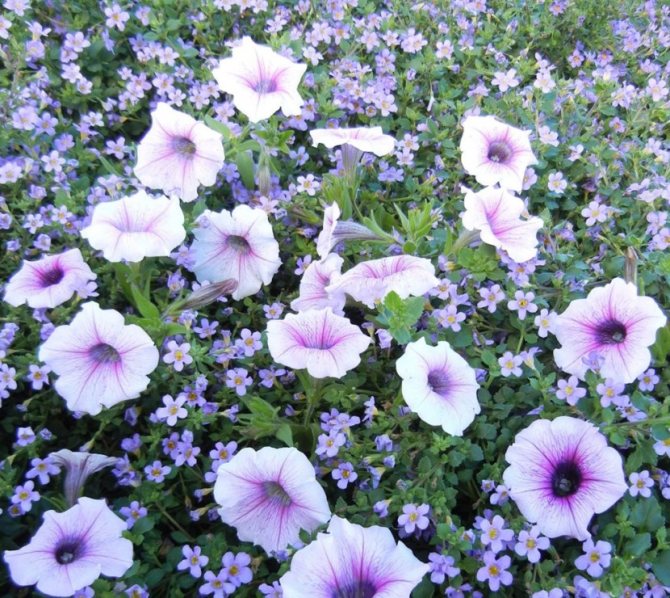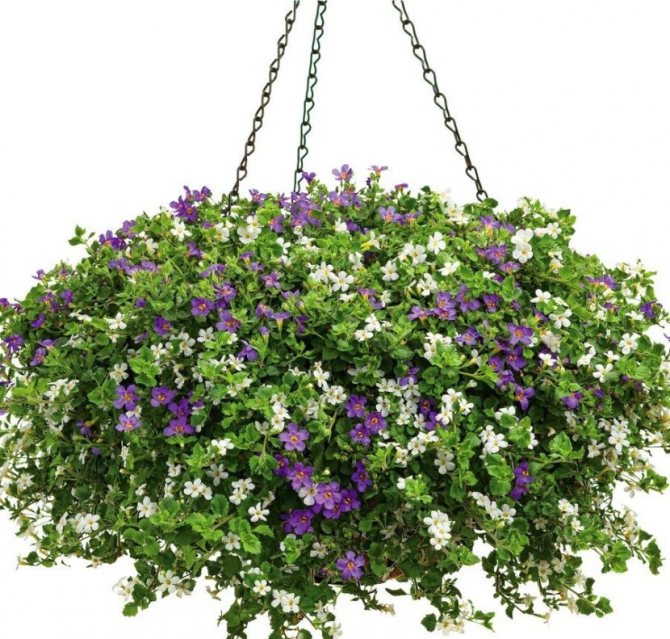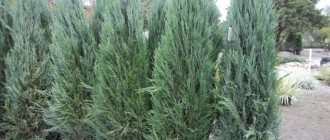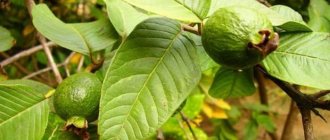- November 3, 2018
- Flowers
- Galina Chebykina
Bacopa (otherwise - sutera) is the most beautiful of flowering plants, which will help to decorate not only the loggia, garden plot and stone walls, but also the whole apartment. These flowers began to be cultivated in Russia not so long ago - from the 90s of the twentieth century, but in such a short period of time many people fell in love with them. The plant arrived in our region from Africa. The bloom of the suter is noteworthy, which, with proper care, lasts from March until the end of October. Today we will talk about growing bacopa from seeds. Photos of the plant are also posted in the publication, and they will help you fully imagine the beauty of flowers.
Description
It is a herbaceous plant, its branches can grow up to 0.7 meters in length. The leaves are small, paired, painted in a pleasant green color, where the shade of olive is clearly visible. A photo of Bacopa, growing from the seeds of which we will consider in the publication, will help you evaluate how beautiful its flowering is. It is for this that she fell in love with many gardeners. The flowers themselves are not large in size, but due to the friendly flowering, the plant looks very impressive. The most common color is blue, but there are white, pink and purple varieties.

Flowers do not bloom smoothly, but almost simultaneously. Then they bloom and fall at the same time, but fresh buds immediately come in their place.
We suggest further familiarizing yourself with the varieties and photos of bacopa. Growing from seeds of all types is the same, care is the same, and we will consider all this below. In general, there are more than 60 species of this ampelous plant in nature. We will not get to know all of them, but consider only the most popular ones.
Reproduction
Bacopa Carolina reproduces vegetatively by grafting the stem, its apical shoots are planted in the ground after they reach 10-15 cm in length. In this case, it is not necessary to deeply deepen the lower whorl of the leaves. After a certain time after this process, roots will appear at the base of the leaves of the plant. In the Australian species, the lateral processes are cut off at least 5 cm and planted in a new place. If no roots appear on a young plant, you can leave it floating in the water until it grows roots. Reproduction of all other types of bacopa also occurs vegetatively.
Monier
[collapse]
Snowtopia
In addition to its beauty, this plant is completely unpretentious. The only thing is to ensure its landing in places where direct sunlight does not penetrate.
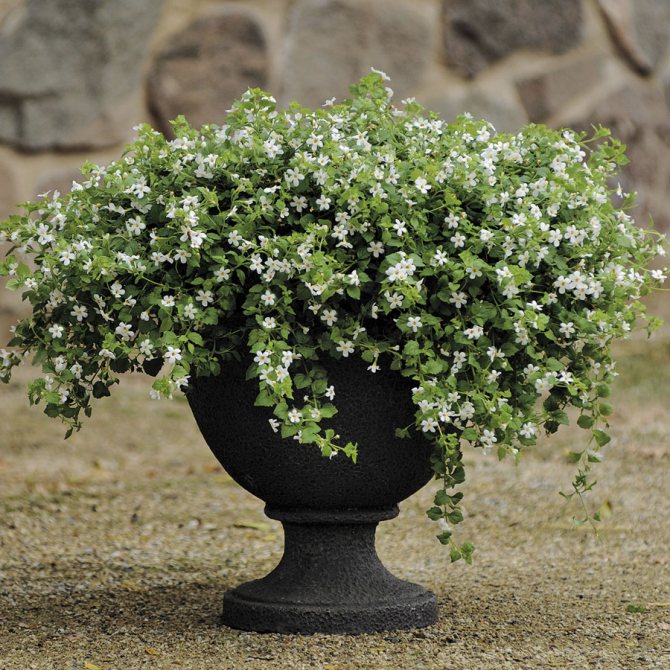

When in bloom, Snowtopia resembles a large ball of flowers. The shoots of this plant can grow up to 60 centimeters, the flowers are white. This bacopa is perfect for growing in baskets and flowerpots, it is in harmony with other flowering and non-flowering plants.
Ampelnaya Bacopa: planting and care
Bacopa flower ampelous - white, blue, terry and spreading varieties
Frosts, a sharp drop in temperature will not leave young seedlings a chance for rooting. Bacopa has very delicate roots that grow almost on the surface of the soil, so they will be the first to suffer. After root damage, they cannot be restored. You can save the stalk and try to root it again.
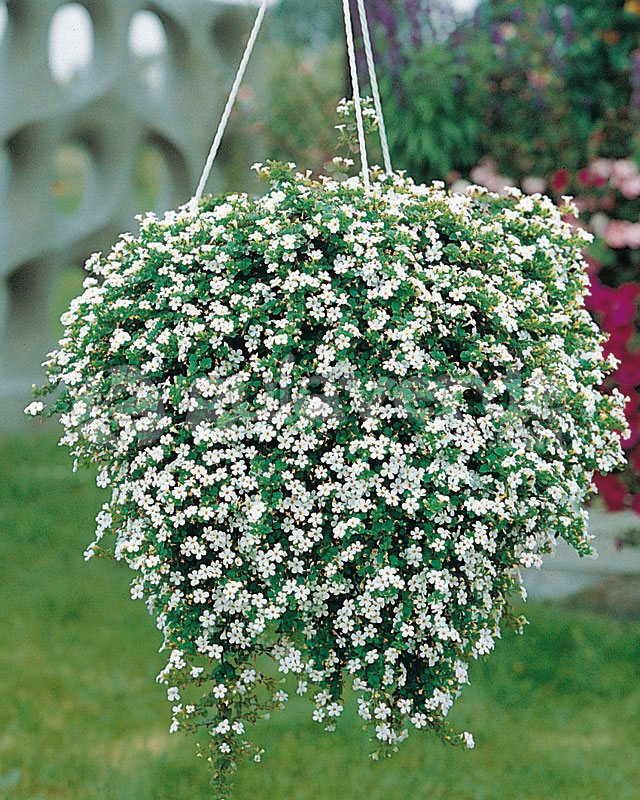

Ampel Bacopa
Seedlings must be hardened before planting.A few days before planting, you need to leave the pots on the street in the place of growth of the future bush - a balcony or a veranda.
For planting in pots, you need to prepare the soil. A mixture of peat, sand and turf in equal parts will be an excellent soil for an ampel flower. The pot must have a drainage hole. A layer of expanded clay is not less than 4-5 cm, stagnant moisture leads to decay of the root system.
Important! After planting the seedlings, you can feed it again so that the roots take root faster and the plant goes into active growth.
After going through the rehabilitation period (14 days), the plant can be pinched, forming it in the form of a bush, a weaving or a falling flower.
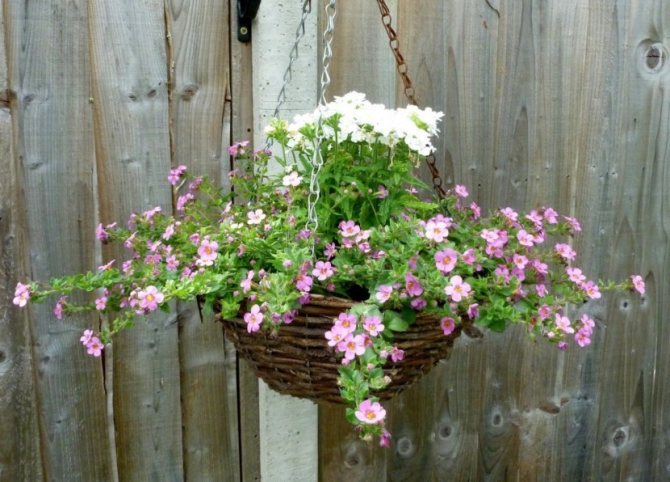

Bacopa perfectly coexists in one pot with other ampelous flowers, creating compositions of incredible beauty
Blutopia
This is a beautiful annual plant, the shoots of which grow up to 60 centimeters. During the flowering period, it is covered with small blue flowers, there are a lot of them. When growing from the seeds of Bacopa Blutopia, one point should be taken into account: the sun really loves this plant! If there is not enough natural light, then the shoots of the plant will begin to stretch, thin out, and with all this, flowering will completely stop.
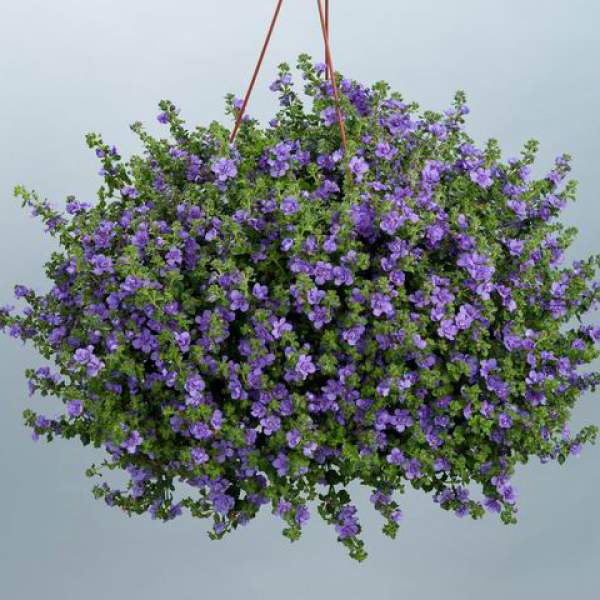

Blutopia is used for decorating gazebos, borders, as well as at home, where it looks beautiful in pots, baskets and flowerpots.
Vasilisa
The shoots of this variety are drooping, growing from 30 to 60 centimeters. The color of the flowers is special - a delicate, but rather rich purple. It harmonizes perfectly in compositions with many other plants, including bright flowering ones.
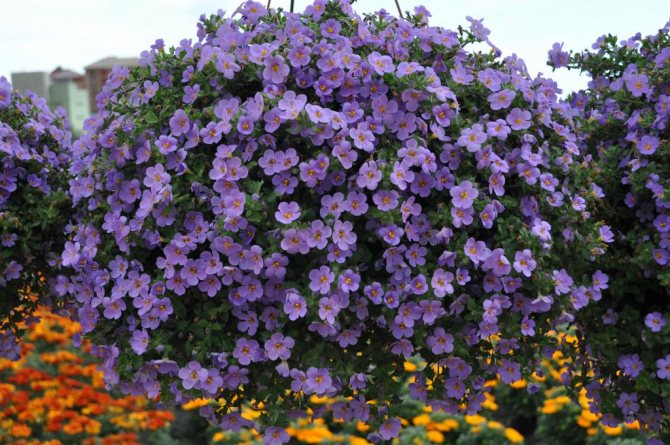

Growing from seeds of Bacopa Vasilisa is possible both in areas illuminated by the sun and in shaded areas (but not completely dark).
Giant snowflake
The name speaks for itself - this is a giant plant, the shoots of which grow up to a meter. The foliage, like that of other varieties, is small, but the flowers are already large, white, bloom amicably and perfectly decorate any landscape of a personal plot, loggias and balconies, and also look great at home in hanging and desktop baskets.
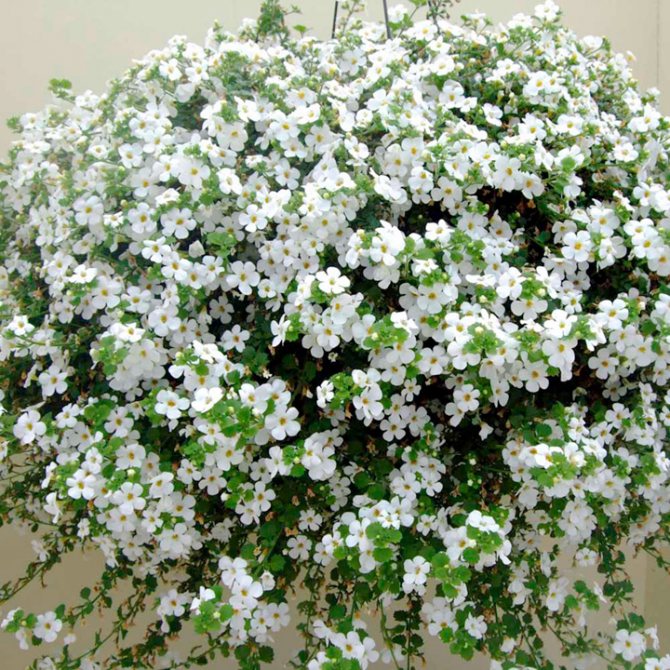

The plant is very unpretentious, and you will understand this when growing bacopa from seeds. Photos and descriptions of flowers will help you decide on the choice of a variety.
Can you grow Bacopa yourself?
Many people doubt whether they will be able to grow such a beautiful plant on their own at home. Most do not dare to test their strengths, believing that such plants are very capricious and require a lot of time, care and maintenance. This is a misconception, at least about Bacopa. Growing from seeds is within the power of any person, even those who do not feel the craving for agriculture and are faced with a similar business for the first time.
Plant seeds can be sown both in pots (for seedlings or for permanent cultivation), and in open ground. The main thing for the plant is good and light soil. Growing bacopa from seeds, a photo of which is in the publication, must be started in sunny and warm areas, so the first sprouts will appear faster.
Soil preparation
Not any soil is suitable for growing this flower, its composition should ideally be as follows: one part of peat and leafy earth, two parts of good humus and river sand - the composition is able to absorb and retain moisture well. Such soil is suitable not only for growing in flower beds or lawns, but also for home cultivation - in flowerpots, pots, just pots.
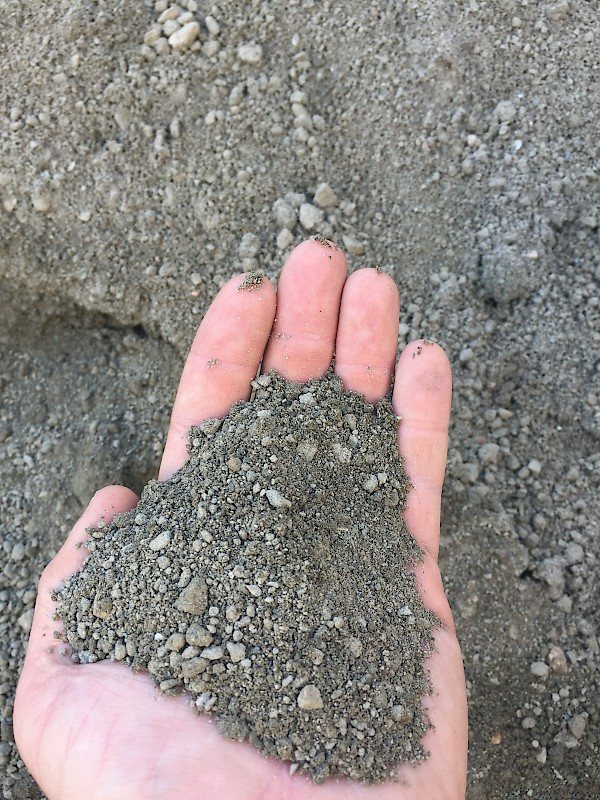

Growing ampelous bacopa from seeds is a simple matter, but everyone should know that the soil must be disinfected before planting seed material. If you want to plant a plant near your home, just pour boiling water over the ground. If growing at home, then you can spread the kidney on a baking sheet, and then fry it for 20 minutes in an oven preheated to 180-200 degrees.
Seed preparation
If you purchased the seed from the store, you most likely received very easy-to-use pellets. The advantage of such granules is that the seeds in them are already processed, and you will not need to waste time on this. In one such granule there is never one seed, there are several of them. The manufacturer does this to increase the percentage of germination, and as a result, the consumer, when growing from one dragee, receives not one stalk, but several young plants.
If you still have the seeds in their usual form, then you will have to try a little. First of all, it is recommended to mix the seeds with river sand - this is necessary to reduce losses, since the seeds are very light. Next, fill the material with a weak solution of manganese and hold it in this form for several minutes.
Sowing
When to plant Bacopa? Growing from seeds outdoors is easier, but only suitable for warm regions where frost is no longer present in April. It is easier to plant seeds for seedlings, and only then plant them in open ground or in pots. Sowing seeds is done in the first week of March. If you decide to plant a flower earlier - in mid-February, you will have to provide additional lighting for the plantings.
- Prepare the soil mixture according to the recipe described above, distribute it on the tray. Moisturize.
- If you have granules, stick them into the ground, do not sprinkle them. Simple seeds are laid out neatly with tweezers on top of the soil, and they also do not need to be sprinkled, germination will be more productive with good lighting.
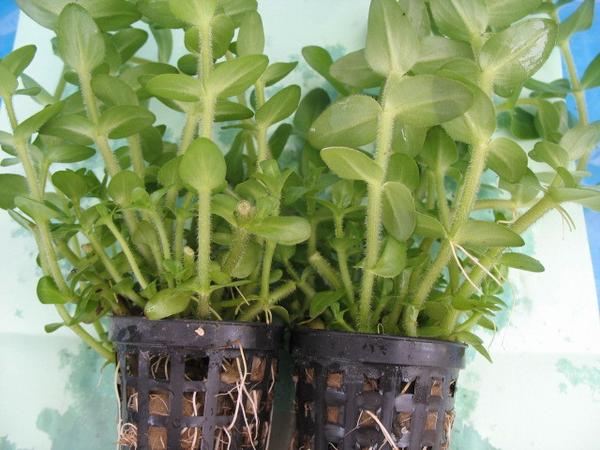

Next, you need to create optimal conditions for germination - this is heat, light, high humidity. How to ensure all this?
- Gently water the plantings with water at room temperature. To prevent the seeds from eroding, do not use a watering can; it is better to water in small portions from the palm of your hand or a spray bottle.
- Cover the tray with a plastic bag, place it on a windowsill, where there is no draft, and the sun shines longer than from other sides of the apartment.
The best temperature for fast germination is not lower than +20 degrees. If you do everything right, then in two weeks you will see the fruits of your labor - the first sprouts.
Seedling care
Growing bacopa from seeds at home is not difficult, but painstaking, and in order to get a healthy and beautiful plant, you need to adhere to the following instructions when shoots appear:
- The sprouts can be in one tray until two (at least) true leaves are released. After that, you will need to make seating.
- If you have bundles of granules, then place one bundle in one pot. If you have sprouted individual seeds, then you will need to plant them in a pot, several pieces at a distance of 1.5-2 centimeters from each other.
- After transplanting, it is possible (not necessary, but desirable) to make the first feeding. Buy a universal fertilizer for flowering plants, but dilute it not as indicated in the instructions, but twice as weak.
- Productive cultivation of seedlings will be only at high temperatures, it is desirable to adhere to the range from 22 to 26 degrees. A heater is installed if necessary.
- After a week or two, you will need to make a second pick. Here you will need to plant the sprouts separately from each other in different pots. You need to deepen the sprout by one knot, so it will be more stable.
Bacopa in pots
A flower is known under a different name - sutera. Homeland - southern Africa. The leaves are delicate, small, bright green. The flower is loved by gardeners, therefore it is constantly undergoing selection for breeding new varieties with an unusual color of petals. Its charm is added by unpretentiousness and good endurance of high and low temperatures. Despite the external fragility, sutera has a strong immunity, and therefore rarely gets sick.
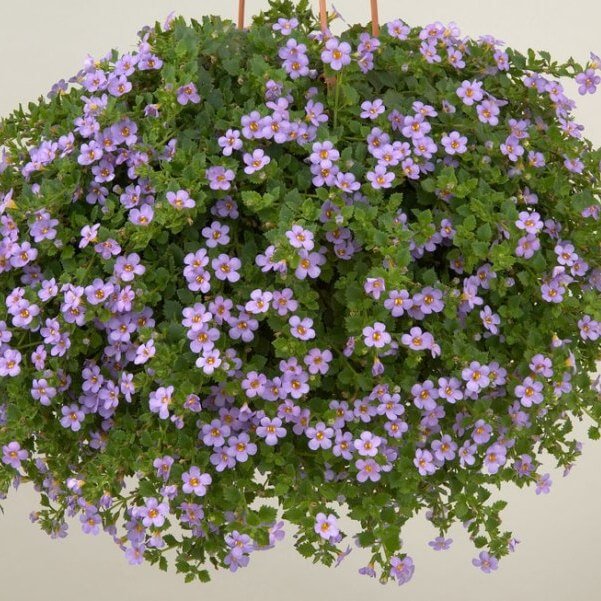

Bacopa planted in pots is one of the most delicate and beautiful flowers for the garden and home
Additional Information! Sutera can look different. Depending on the variety, its petals abound in a variety of shades - pink and white, purple, lilac and blue.
How many plants should be planted in one pot
The length of the shoot reaches from 60 to 100 cm. In order for a flower to grow and bloom all season, you need to know how much bacopa is permissible when planting in a pots. The number of bushes in a flowerpot depends on the size of the pot. You need to plant several bushes at a distance of 10 cm from each other. If the diameter of the pot is no more than 25-30 cm, no more than 2 pieces of bushes can comfortably fit into it.
Ampel landing
When ampelous planting, bacopa is planted in a pot using the seed method. For planting, you can buy ready-made soil, or you can prepare a nutritious substrate yourself:
- 1 part peat;
- 2 parts deciduous humus;
- 1 piece of leafy land;
- 2 pieces of sand.
The optimal time for sowing is March. The peat substrate is sterilized in the oven at 100 ° C for 4 hours. After the soil has cooled, it must be moistened and seeds must be placed, but the planting material must not be buried. The container must be covered with glass or polyethylene.
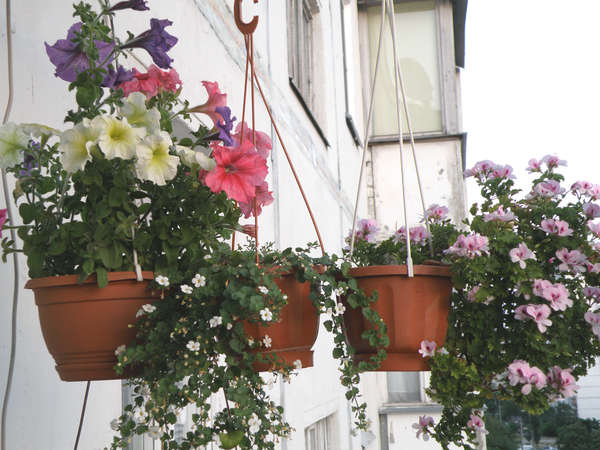

For ampelous planting of a flower in a pots, you need to make supports
The box with seeds should be in a well-lit place at a temperature of 20 ° C. Seedlings will begin to appear in 10-14 days. When several full-fledged leaves appear, the bushes are divided into different pots.
Additional Information! There is no need to remove dead flowers. They will disappear on their own, because Bacopa has the property of self-cleaning.
Combinations of bacopa in pots with other flowers
Sutera is beautiful both solo and in combination with various colors.
What does this flower combine with?
Recommended combinations of bacopa:
- fuchsia;
- lobelia;
- ageratum;
- nasturtium.
Bacopa in landscape design is used to decorate bald patches on the site; it forms a thick and open carpet. Standard flowers will be beautifully combined with it.
Bacopa with petunia: planting in pots
When planting bacopa in pots with other flowers, you need to pay attention to the selected variety. Flowers are tall, with long shoots, it is not recommended to combine them, because they will be discordant with each other.
The ideal option is a tall petunia or with massive inflorescences planted in the background, in front of the flowerpot a bacopa is placed as a frame.
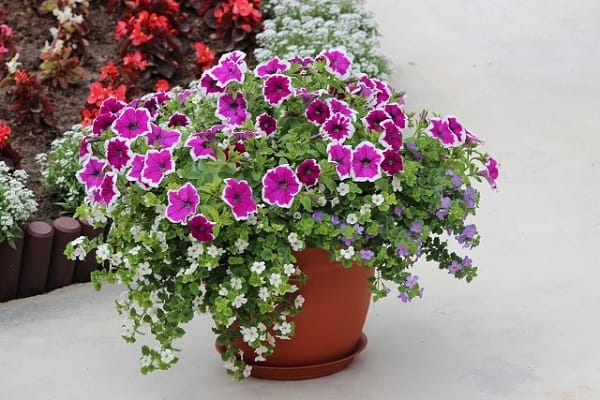

Compositions with bacopa in combination with a variety of colors look bright and unusual
Attention! When planting together, the bushes cannot be thickened, therefore they must be placed at a short distance. A good option - a couple of bacopa bushes are planted around the perimeter of the pot, and in the center is a bright petunia flower.
Hardening
Growing bacopa both outdoors and in pots at home will be more productive if you use the seedling method. It does not matter whether you will take out the seedlings to flower beds or place them in a beautiful planter in the room, young bushes must go through a hardening stage. This will help the plant in the future to easily tolerate drafts, coolness, temperature changes.
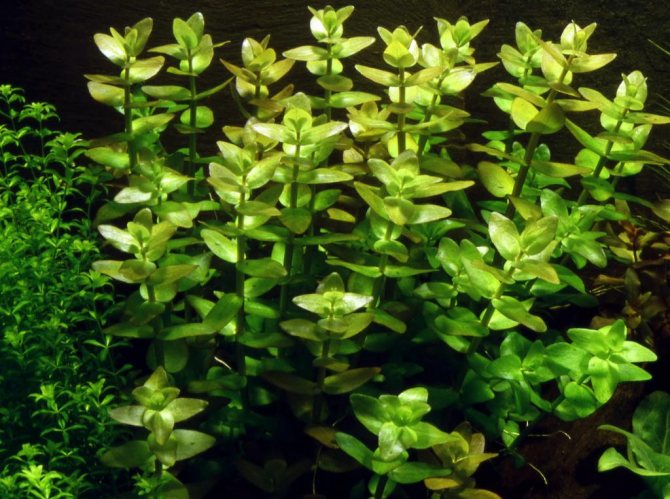

- After 2-3 days after re-picking, you need to apply fertilizer again. All the same universal that was used for the first time will do, but it will need to be diluted according to the instructions.
- After feeding, young plants can be hardened calmly. During the day, keep the temperature in the range from 20 to 23 degrees, and even less at night - from 12 to 15 degrees.
Features of the plant and its popular varieties
- Bacopa can be grown both in the garden and in the room. Some species grow in water.
- The plant does not live long, but it reproduces very simply.
- The stem is thin and long - it can reach 60 cm.
- Leaves are ovoid, small. Their color is olive green.
- Flowers may differ from cultivar.There are tubular and bell-shaped forms, simple and terry, of various colors.
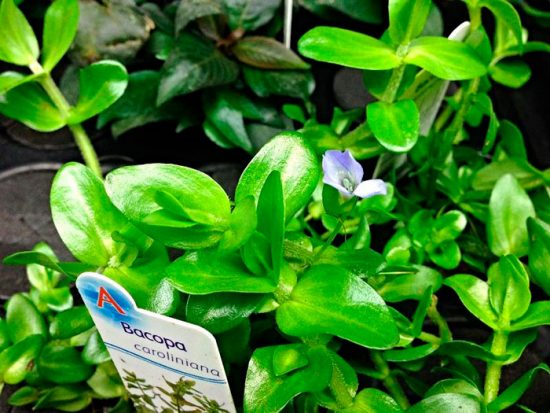

- Bacopa blooms for a long time, throughout the season. It happens in a wave-like manner: after the massive blooming of flowers, a period of small "rest" begins, during which much fewer buds appear.
- The aroma of flowers is either very weak or completely absent.
Plant species popular among amateurs:
- Carolina Bacopa is a plant that came to us from the USA. It grows in water. Amateurs can find this species in aquariums and decorative ponds. Stems with fleshy rounded leaves grow in height. Blue buds form at the top of the stems above the water.
- Bacopa Monier is a creeping species. Good for horizontal gardening. The leaves are small, elongated. Flowers can be white, blue or purple.
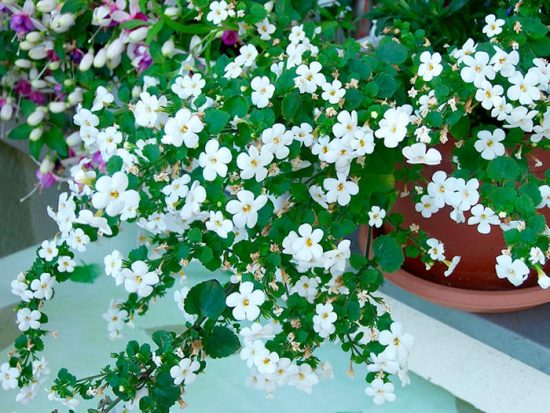

Attention! Bacopa varieties with white flowers grow and develop faster than those with flowers of a different tone.
Disembarkation to a permanent place
It is necessary to plant in open ground only after there is no longer a threat of freezing. Hardening is a mandatory procedure. Plants are placed on the flower beds with an interval of 30 centimeters.
If you want to plant Bacopa in pots, flowerpots and pots, then do it whenever you like, but only after hardening. One pot - one plant. It seems small and slender, but soon it will begin to develop, and even two individuals will be cramped. Bacopa can also be taken out to balconies and unheated loggias only if there is no threat of freezing.
Use in landscape design
Most types of suters have found application in decorative floriculture. The culture is characterized by accelerated growth, a long period of preservation of decorativeness (in the form of juicy foliage of a rich green color and colorful inflorescences). Bacopa is used to decorate the coastal strip of garden ponds.
A profitable solution is to use flowering grass to decorate walls and fences. In the front garden, Bacopa can serve as both an independent and a background plant.
Hygrophilous crops such as nasturtium, petunia, fuchsia, and lobelia are good neighbors for a sutra.
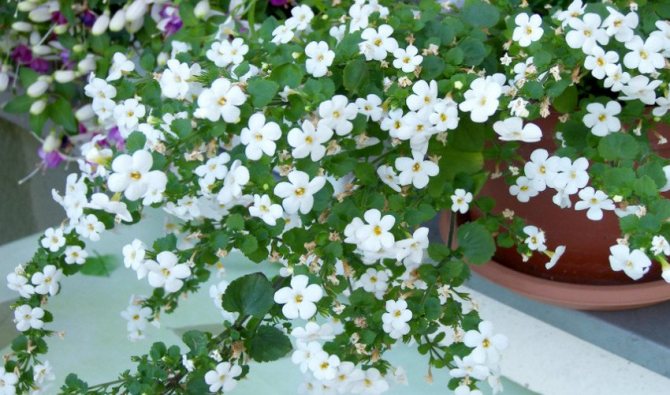

The wildly blooming and fragrant bacopa will add a charming look to any garden or balcony. And if at the stage of cultivation it may seem too whimsical, then after fixing the plant in a permanent place, you will radically change your mind.
Basic care
Growing bacopa from seeds at home is not difficult, but still requires compliance with several conditions:
- Frequent and abundant watering is the most important rule when growing a wonderful plant. The flower loves a lot of moisture, it is especially important to comply with moisture standards on dry and hot days. Only under the condition of sufficient watering will the suter develop, become sprawling, and please with abundant and long flowering.
- The second prerequisite is to apply top dressing up to 3-4 times per season. Bacopa does not require any "pickles". Fertilizers designed for complex feeding of flowering plants are quite suitable for her.
The design of the bush is a matter of personal taste. If you want the plant (especially the one that grows in hanging baskets) to resemble a flowering ball, then pinch the shoots when they reach a length of 50-60 centimeters. If you want the flowering shoots to be of different lengths, to hang down, resembling flowing water, then pinching can be dispensed with.
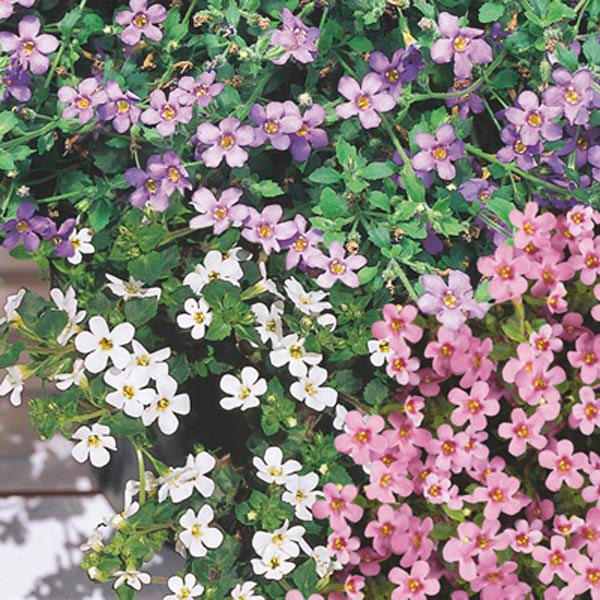

That's the whole care. You don't even have to free the plant from faded buds on your own, as Bacopa sheds them on its own. In the place of old, fallen flowers, new ones soon bloom.
3. Varieties:
3.1.Bacopa carolina - Bacopa caroliniana
Perennial, herbaceous, small-flowered plant with erect, profusely branched stems at the base. Leaves are oval, glossy, green, sessile, arranged in opposite pairs.The flowers are blue, solitary, appear mainly in the upper part of the stems, reminiscent of forget-me-not. This is one of the tallest species of bacopa, reaching 50 - 100 cm.
↑ Up,
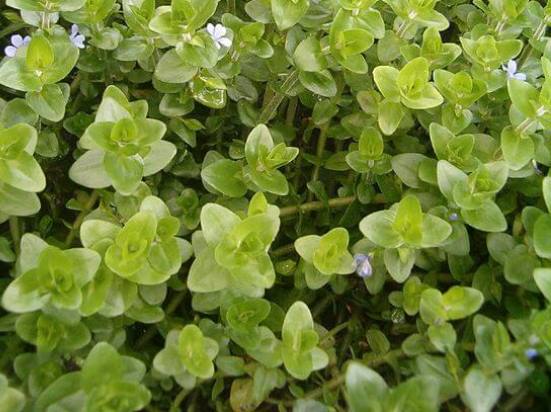

3.2 Bacopa Monnier or small-leaved - Bacopa monnieri
Perennial herb with thick, powerful, often lodging stems with numerous lateral processes. Leaves are sessile, green, glossy, oval or spoon-shaped, thick, juicy. The flower adorns the plant in the summer months and appears on the tops of the shoots. Each flower consists of 5 rounded or slightly oblong white, blue or lilac petals. The plant is believed to improve memory and learning ability, relieve anxiety and stress, and is also used as a tonic supplement.
The green mass of this variety is used in drugs that help with Alzheimer's disease.
↑ Upward,
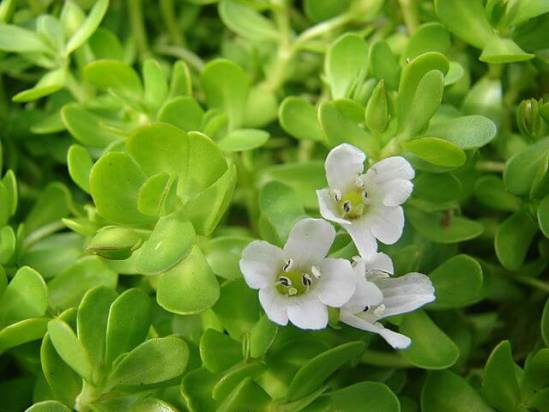

3.3 Bacopa cordata - Bacopa cordata
Perennial, evergreen, large-flowered ground cover with thick, lodging stems, does not exceed 10 - 20 cm in height. Leaves are small, dark green, heart-shaped, with large denticles along the edge of the leaf blades. The leaves are arranged in opposite pairs on short petioles. The flowers are quite large, attractive, white, pink, lilac, purple. Flowering is very abundant and long lasting.
↑ Upward,
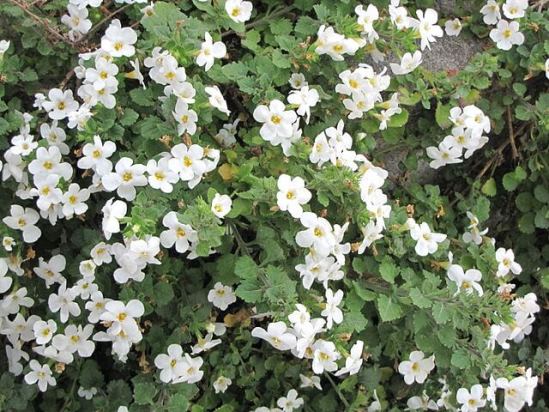

3.4 Spreading Bacopa - Bacopa diffuses
Attractive herbaceous plants up to 20 cm high with profusely branched, thick stems that can reach 1 meter in length. Leaves are dark green, up to 2.5 cm long, rounded, on short petioles. The leaf blades have large denticles along the edge. Flowers appear mainly in the warm season on the tops of the shoots, can be simple or double, painted in white, cream, pinkish or lilac shades. The plant is often grown as an attractive ampel, forming a profusely blooming, dense ball.
↑ Up,
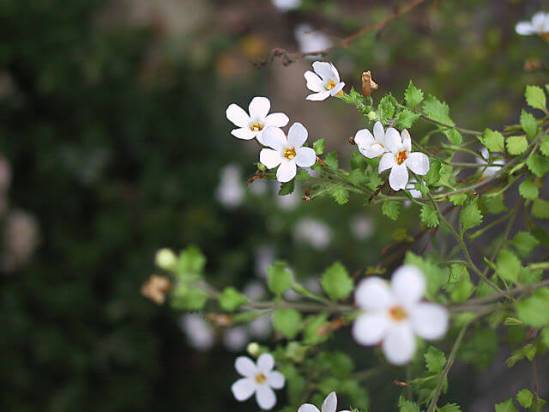

3.5.Bacopa madagascar - Bacopa madagascariensis
An evergreen perennial with strong, thick, erect, slightly branched stems 1 - 3 m high. The leaves are light green, fleshy, oblong - oval in shape. The leaf blades are entire, can reach a length of 1 - 3 cm. The flowers are funnel-shaped, with blue or purple petals fused with each other.
An interesting feature of the plant is that it can grow halfway in water, while the top of the shoots is in the air. This variety is often used in the aquarium hobby.
↑ Up,
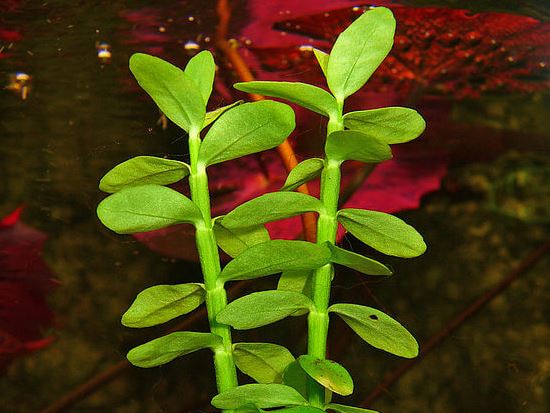

3.6. Bacopa woolly or Lanigera - Bacopa lanigera
An attractive evergreen plant, the main distinguishing feature of which is the presence of a very dense, but short, light pubescence on the stems and leaves. Stems are erect, thick, succulent, slightly branched - side shoots often appear at the base of the plant. Leaves are glossy, green, ovate, arranged in opposite pairs, sessile. Leaf blades are entire, reaching a length of 2 - 3 cm. Flowers are solitary, axillary, funnel-shaped, with wide pinkish or purple petals.
In its natural habitat, it is half submerged in fresh water. When grown at home, serve as a good decoration for an aquarium.
↑ Upward,
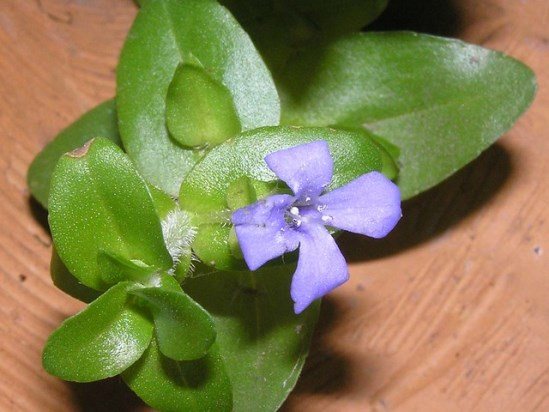

What pests and diseases are terrible for the plant?
Bacopa is an unpretentious plant, and it is resistant to diseases and pests. The worst thing for her is aphids, which you can get rid of with insecticides or soapy water.
When the soil is overdried, a whitefly may appear. Only the complete removal of the upper part of the plant will save from it. Next, remove the pot in a dark and cool place, chemical treatment of the roots is harmful to the plant, and it is used only as a last resort.
In the article you will find the rules for growing from bacopa seeds and photos.
How to grow?
Bacopa is planted in a permanent place after intensive watering, planting scheme: 30 × 30 cm. To ensure bushiness of the plant, as soon as its branches reach 60 cm, they are pruned.
When growing bacopa, you should adhere to several rules:
- Feed the plant with complex fertilizer 3-4 times a season.
- Water often, but do not flood the plant, so that its roots do not rot, but it is worth considering that Bacopa does not tolerate drought, if there is a lack of moisture in the room, then the plant wilts and looks weakened. It is worth using a surface centrifugal irrigation pump.
- Pruning. In order for the plant to be lush and branchy, it is required to pinch it at a height of 50-60 cm. After that, the plant in a pots will look beautiful and take a spherical shape. But how fuchsia is trimmed for the winter is described in great detail in this article.
The video shows how to grow Bacopa:
You don't need to pick dry flowers, the plant sheds them by itself when the time comes, so Bacopa always looks well-groomed during flowering.
Pests
Despite its high resistance to diseases and pests, it can still be affected by aphids. As soon as there are a lot of them, it is immediately necessary to treat the shoots of the plant with soapy water. For the complete disappearance of this pest, it is worth duplicating the treatment after a week by washing the plant with soapy water. The process will need to be repeated if necessary. If, after three times using the soap solution, the aphids still have not left the flower, then it is necessary to use stronger means - insecticides.
Leads to weakening of the whitefly plant. To combat it, you have to cut the plant almost at the root. Then the pot with them is placed in a cold place, after a while healthy shoots will appear.
Before wintering, the plant is prepared: its aerial part is completely cut off, and the pots with roots are transferred to a room in which the temperature will not drop to -100C. under such conditions, the plant goes into a state of dormancy and no longer leaves branches. If the pot of bacopa is moved to a room with a higher temperature, it will throw out the branches again.
The video shows how to get rid of pests:
Bacopa, despite its ampelous appearance, is often used for landscape design as a ground cover plant. It can be planted next to the supports, if you tie up the branches of the plant, then they will branch out beautifully along the walls and surround the windows, but in this case it is necessary to choose varieties with a branch length of 1 meter. She looks great in a flower bed surrounded by other flowers.


